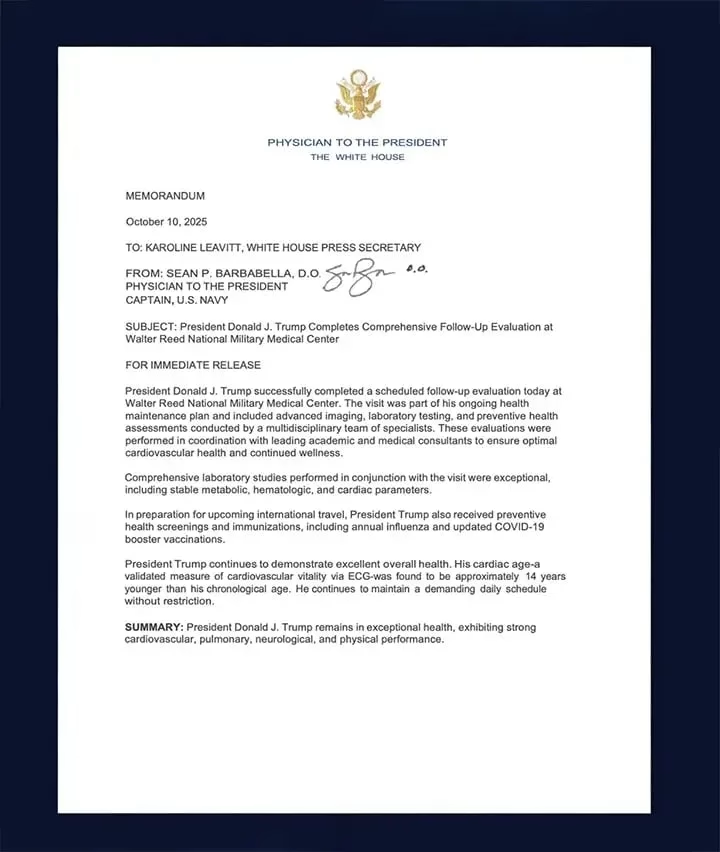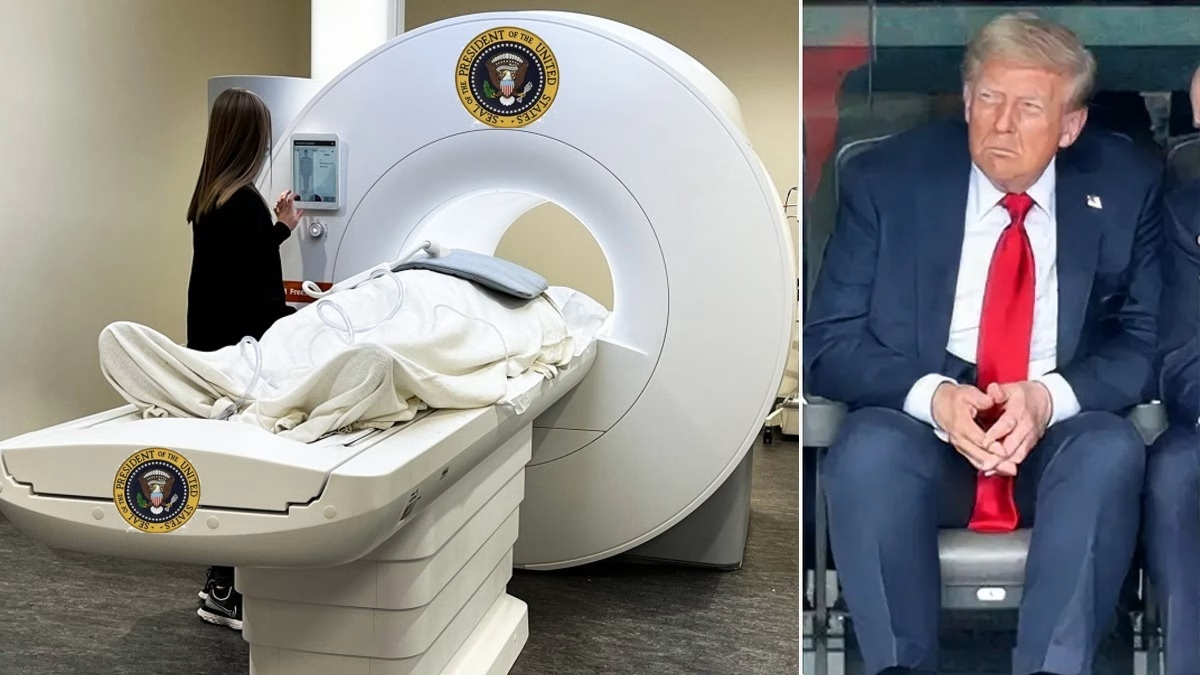By Jane Lewis | Wednesday, October 29, 2025 | 5 min read
Trump’s recent MRI, quietly revealed during a press interaction, has reignited scrutiny over his health and the White House’s transparency.
For a man who once allegedly sent his bodyguard and legal team to forcibly retrieve his medical records from his own doctor’s office, the news that President Donald Trump underwent a concealed MRI scan is stirring fresh concern. The incident in question dates back to February 2017, when Dr. Harold Bornstein, Trump’s former personal physician, claimed that Keith Schiller—Trump’s longtime bodyguard—along with Trump Organization lawyer Alan Garten and another individual, entered his office and removed all of Trump’s medical files. That episode, already unsettling, now casts a long shadow over the president’s latest health disclosure.
This time, the revelation came not through a formal medical briefing, but in a casual exchange aboard Air Force One. “I got an MRI,” Trump told reporters. “It was perfect.” When pressed about the reason for the scan, he deflected, saying his doctors had already provided the full results. “You know the whole thing,” he added. “And it was perfect.” The vagueness of his response, paired with his insistence that he’d inform the press if anything were wrong, did little to quell speculation.

Dr. Jonathan Reiner, a respected cardiologist who once treated Vice President Dick Cheney, weighed in with a pointed observation: MRIs aren’t routine. “Typically, they’re prompted by symptoms,” Reiner explained. “They can be neurologic symptoms, back pain, or cardiac issues. The public deserves to know why the president underwent this test, what specialists he saw, and what the results were.” Reiner, now a professor at George Washington University, emphasized that an MRI is a targeted diagnostic tool—not something casually included in a check-up.
The White House, however, has offered little clarity. Press Secretary Karoline Leavitt brushed off inquiries, insisting the scan was part of a routine health evaluation. But Reiner pushed back, stating unequivocally that MRIs are never part of standard screenings, regardless of one’s status. “Whether you’re the president or a civilian, an MRI is not routine,” he said.
Trump’s physical appearance and behavior over the past year have only added fuel to the fire. Observers have noted swelling in his ankles, bruising on his hands, and a noticeable droop in his facial features. These signs, coupled with memory lapses, difficulty navigating stairs, and occasional instability while walking, have prompted questions about his overall fitness. In July, the White House acknowledged that Trump suffers from chronic venous insufficiency—a condition where leg veins struggle to return blood to the heart. While common in older adults, it can lead to swelling and discomfort, and may require medication.
Reiner speculated that some of Trump’s visible symptoms, particularly the bruising on his hands, could be linked to blood thinners. “There are a lot of things that can cause bruising,” he said. “But in a 79-year-old, the most common cause is medication—specifically, blood thinners.” If Trump is indeed on such medication, it would suggest a more complex health profile than the public has been led to believe.
The timing of the MRI also raises eyebrows. Trump had already undergone a physical in April, making the October visit to Walter Reed his second in six months. The official memo from that visit described him as being in “excellent overall health” and mentioned “advanced imaging,” but did not specify the nature of the tests. The lack of detail, combined with Trump’s own evasiveness, has led critics to question whether the administration is being forthright.
This isn’t the first time Trump’s health has been a subject of controversy. From his unannounced visit to Walter Reed in 2019 to his erratic speech patterns and physical stumbles, there’s been a persistent undercurrent of concern. Yet the administration has consistently downplayed these issues, offering minimal updates and dismissing speculation.
What makes this latest episode particularly troubling is the pattern it seems to reinforce: a president who resists transparency, a team that shields him from scrutiny, and a public left to piece together fragments of information. In a democracy, the health of a leader isn’t just a private matter—it’s a public concern. And when that leader is known for secrecy and deflection, even a routine medical test can become a flashpoint.



